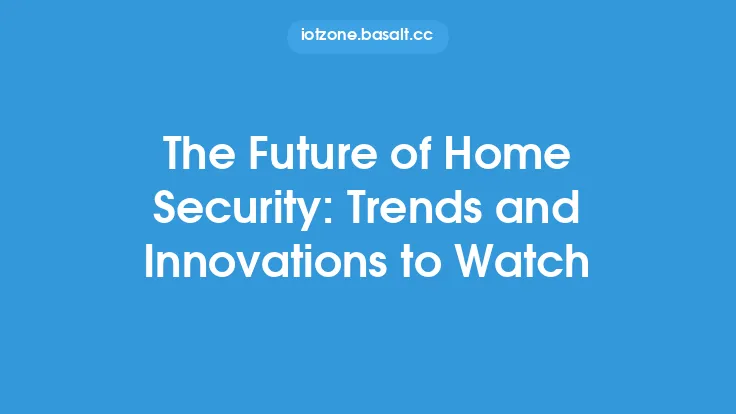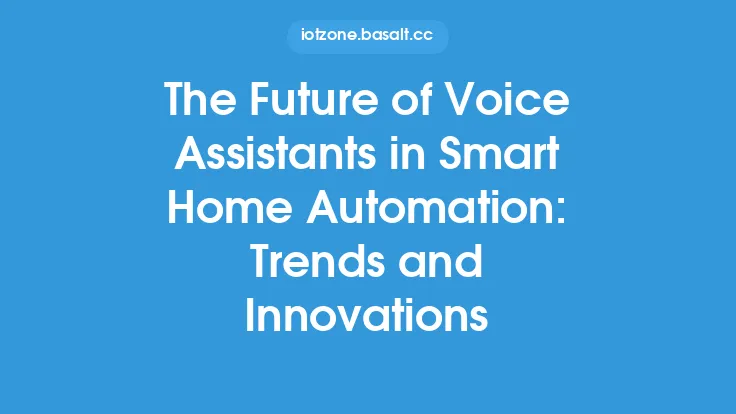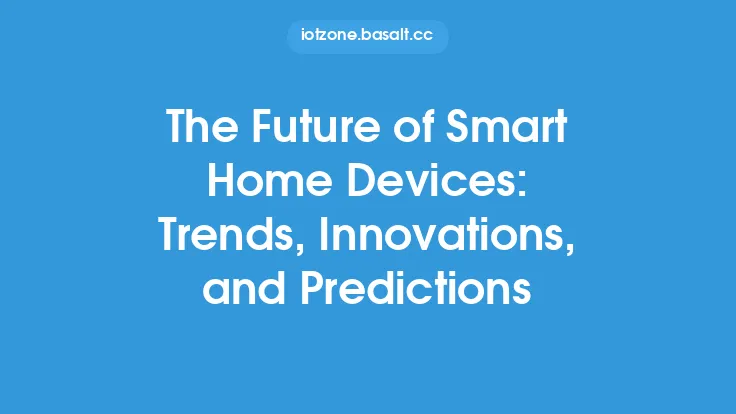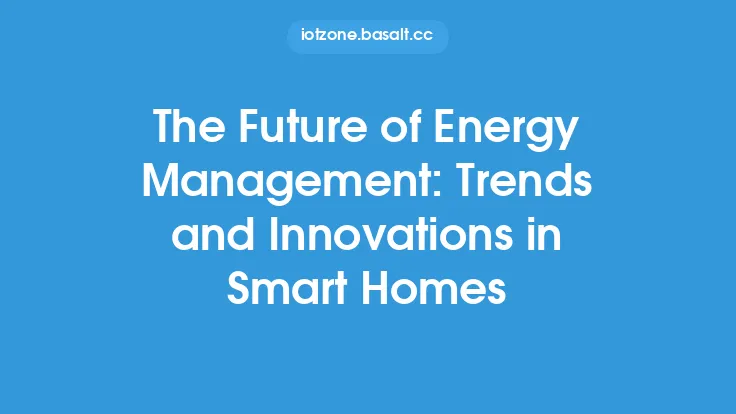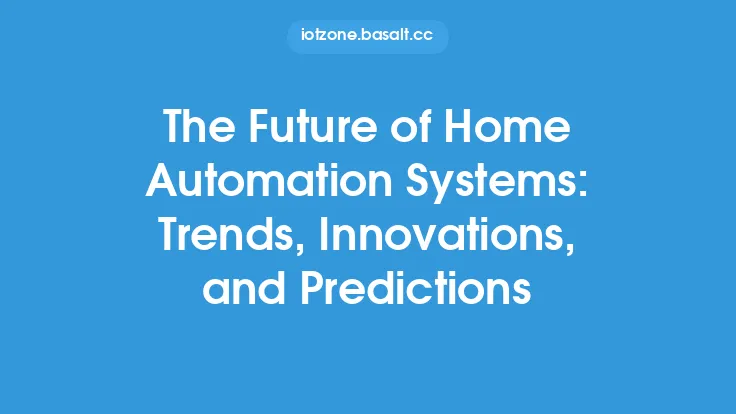The concept of smart thermostats has revolutionized the way we control the temperature in our homes, making it easier, more efficient, and convenient. As technology continues to advance, the future of smart thermostats is expected to be shaped by several trends and innovations that will take the industry to the next level. In this article, we will explore the current state of smart thermostats, the emerging trends, and the innovations that will shape the future of this technology.
Introduction to Smart Thermostats
Smart thermostats are devices that can learn and adapt to a user's temperature preferences, schedule, and lifestyle to optimize heating and cooling systems. They can be controlled remotely through smartphones, tablets, or computers, and can also integrate with other smart home devices to create a seamless and automated experience. Smart thermostats use advanced algorithms and sensors to monitor and adjust the temperature, humidity, and air quality in a home, providing a comfortable and healthy environment for occupants.
Emerging Trends in Smart Thermostats
Several trends are emerging in the smart thermostat market, driven by advances in technology, changing consumer behavior, and the growing demand for energy efficiency and sustainability. Some of the key trends include:
- Increased adoption of voice control and artificial intelligence (AI) in smart thermostats, allowing users to control their thermostats with voice commands and receive personalized recommendations for energy savings.
- Growing demand for smart thermostats with advanced sensors and monitoring capabilities, such as air quality sensors, humidity sensors, and occupancy sensors.
- Integration of smart thermostats with other smart home devices, such as lights, security systems, and home entertainment systems, to create a seamless and automated experience.
- Rising popularity of smart thermostats with geofencing capabilities, which allow users to control their thermostats based on their location and schedule.
Innovations in Smart Thermostat Technology
Several innovations are driving the evolution of smart thermostats, including:
- Advanced materials and designs, such as touch screens, wireless connectivity, and compact form factors, which are making smart thermostats more user-friendly and aesthetically pleasing.
- Development of new algorithms and machine learning techniques, which are enabling smart thermostats to learn and adapt to user behavior more effectively.
- Integration of smart thermostats with renewable energy sources, such as solar and wind power, to optimize energy efficiency and reduce reliance on fossil fuels.
- Use of cloud-based services and data analytics to provide users with detailed insights into their energy usage and recommendations for energy savings.
Impact of IoT and Cloud Computing on Smart Thermostats
The Internet of Things (IoT) and cloud computing are having a significant impact on the development of smart thermostats. IoT enables smart thermostats to communicate with other devices and systems, creating a network of interconnected devices that can be controlled and monitored remotely. Cloud computing provides a platform for smart thermostats to store and analyze data, providing users with detailed insights into their energy usage and recommendations for energy savings. The combination of IoT and cloud computing is enabling smart thermostats to become more intelligent, autonomous, and connected, paving the way for a new generation of smart home devices.
Role of Artificial Intelligence in Smart Thermostats
Artificial intelligence (AI) is playing an increasingly important role in the development of smart thermostats. AI algorithms can learn and adapt to user behavior, optimizing heating and cooling systems to provide a comfortable and energy-efficient environment. AI can also be used to predict energy demand, detect anomalies in energy usage, and provide personalized recommendations for energy savings. The use of AI in smart thermostats is enabling a new level of automation and intelligence, making it possible for users to control their thermostats with voice commands, receive personalized recommendations, and enjoy a more comfortable and energy-efficient home.
Future of Smart Thermostats
The future of smart thermostats is expected to be shaped by several factors, including advances in technology, changing consumer behavior, and the growing demand for energy efficiency and sustainability. Some of the key trends and innovations that will shape the future of smart thermostats include:
- Increased adoption of AI and machine learning in smart thermostats, enabling more intelligent and autonomous devices.
- Growing demand for smart thermostats with advanced sensors and monitoring capabilities, such as air quality sensors and occupancy sensors.
- Integration of smart thermostats with other smart home devices, such as lights, security systems, and home entertainment systems, to create a seamless and automated experience.
- Rising popularity of smart thermostats with geofencing capabilities, which allow users to control their thermostats based on their location and schedule.
Challenges and Limitations of Smart Thermostats
Despite the many benefits and advantages of smart thermostats, there are several challenges and limitations that need to be addressed. Some of the key challenges include:
- High upfront costs, which can make smart thermostats inaccessible to some consumers.
- Complexity and difficulty of use, which can make it challenging for some users to install and operate smart thermostats.
- Security and privacy concerns, which can make some users hesitant to adopt smart thermostats.
- Interoperability and compatibility issues, which can make it challenging to integrate smart thermostats with other smart home devices.
Conclusion
The future of smart thermostats is exciting and promising, with several trends and innovations that will shape the industry in the coming years. As technology continues to advance, we can expect to see more intelligent, autonomous, and connected smart thermostats that provide a comfortable, energy-efficient, and healthy environment for occupants. While there are several challenges and limitations that need to be addressed, the benefits and advantages of smart thermostats make them an attractive option for consumers who want to take control of their energy usage and create a smart home.

